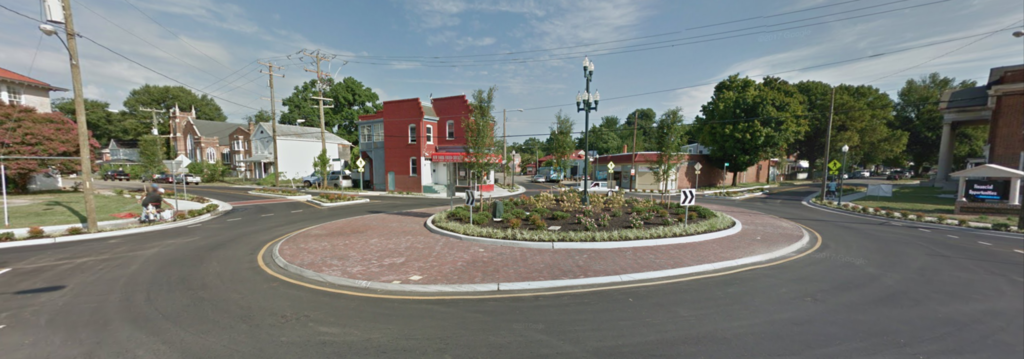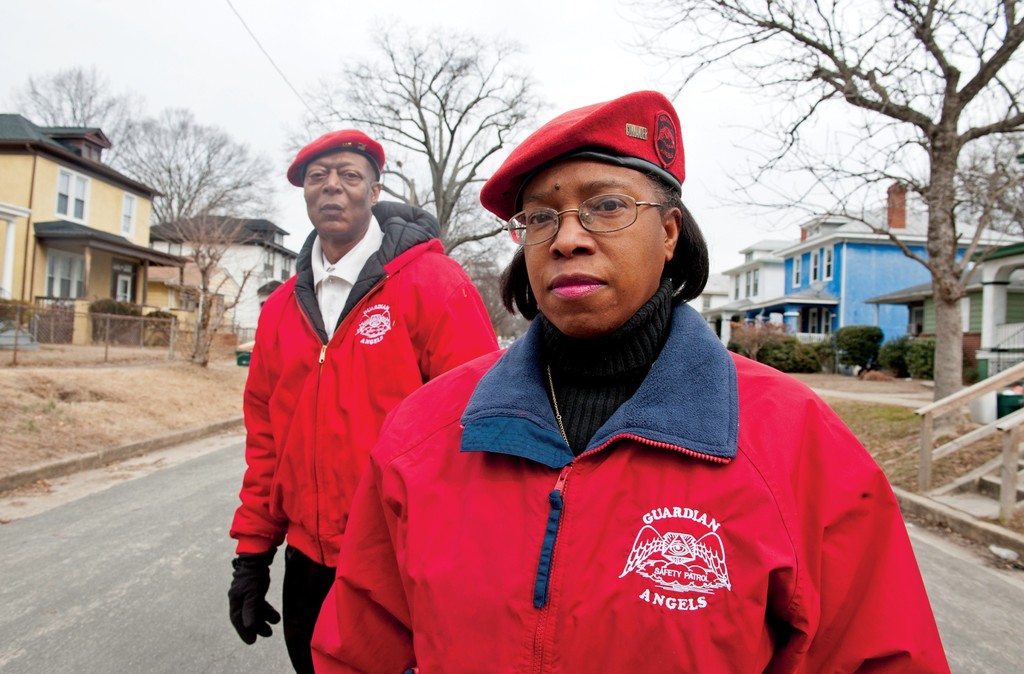By Kevin Johnson
It’s exactly 468 steps from the corner of 2nd Ave. and Burns St. to the traffic circle at Six Points, the commercial and spiritual center of Highland Park. As I walked this route one afternoon, I felt the heat of the sun scorching the already sun-bleached sidewalk. I counted my steps to try to physically measure the experience a resident would have to walk to the nearest hub of retail and infrastructure. After discovering the destination, the walk did not seem worth the effort.
Looking down, I noticed the multitude of cracks in the paved walkway, thousands of them, suggesting the sidewalk’s age and disrepair—a legacy, perhaps of official neglect by the city of Richmond after desegregation drove most of the white folks out of Highland Park. That broken sidewalk stuck in my mind, and later, in Six Points, all I could see were cracks: on the sidewalks, on stonework, on concrete walls with peeling paint. Every building I saw needed help, just like Highland Park.
Help and hope.
Six Points Plaza could be the poster child for urban decay. A shopping center built in the 1970s, the complex is now a mix of boarded-up storefronts, sketchy retail, and run-down apartments. There is an air of abandonment, and menace, to the place. But while decay like this signifies economic hardship, it’s not the whole story. It may look blighted, but Highland Park is working on a renaissance.
Jo White is one of the reasons why. A community activist and leader of the Guardian Angels, she co-founded a non-profit organization, Save Our Youth, to assist young men and women released from incarceration. “How can we be helping these youth and then putting them back on the street where this stuff is happening?” she said, in a 2013 interview with Tina Gregio of Style Weekly. She also met recently with Mayor Levar Stoney to propose reopening Highland Park’s showpiece community park, Gabriel Prosser, which closed more than 15 years ago because of drug-related violence.
White did just that, by presenting this proposal as a possible way of removing the stigma around Prosser park. To take back what has been stolen from the community is an excellent project for the Guardian Angels of Richmond, as this team of dedicated community members step into the physical world to protect services and spaces for all to enjoy. It is yet to be seen if Mayor Stoney will respond to this proposal to open the gates to Prosser park, but in the view of the Guardian Angels, this is just what Highland Park needs.
Another sign of hope is Boaz & Ruth, a large non-profit that works out of an office in Six Points Plaza. According to the Richmond Times-Dispatch, since 2002 Boaz & Ruth has renovated a dozen buildings and started six businesses to revitalize the economy in Highland Park. Their success inspired other members of the business community to launch the Six Points Innovation Center, a teen center that serves at-risk youth with programs for personal and community development. The combined effort of such non-profits exemplify the spirit of hope that will repair the cracks in Highland Park.
Video produced for the proposal of the Six Points Innovation Center. Video provided by Ryan Rinn of the Storefront For Community Design.
The greater issue behind much of the financial and urban decay seems to stem, according to John Moeser of the Bonner Center for Civic Engagement at the University of Richmond, from the loss of wealth after desegregation. In Moeser’s book, The Separate City: Black Communities in the Urban South, his research found that there was a race-based intentional ignorance by the Richmond city government after desegregation. This, in turn, was the leading factor for a large amount of poverty in the area, as the residents were treated far differently when the area was predominantly white during the streetcar days than the predominantly African-American residents who did not leave after desegregation was enacted.

Highland Park’s Six Points center, August 2016 (Google Maps)
One day in Six Points, I struck up a conversation with a man in a hoodie and a backpack who grew up in Highland Park. He wouldn’t give his name, but did volunteer that he’s seen a lot go down here over the past 31 years, including the pitched epidemic of drugs and violence that swept over the city in the 1990s. For much of his life, Highland Park has been “unsafe,” a place where it’s “easy to fall down the wrong path.”
But he hasn’t given up hope. And with the work done by non-profits in the area, the hope has been found, at least for this resident.
With more and more interest in Highland Park, the test of creating new services, like the Six Points Innovation Center, as well as the attempt to reopen Gabriel Prosser Park, will be a landmark study in affecting change on the landscape of urban decay.
For more updates on our walking team, follow @urhighlandpark on Instagram and track #UREdenWalkers.

